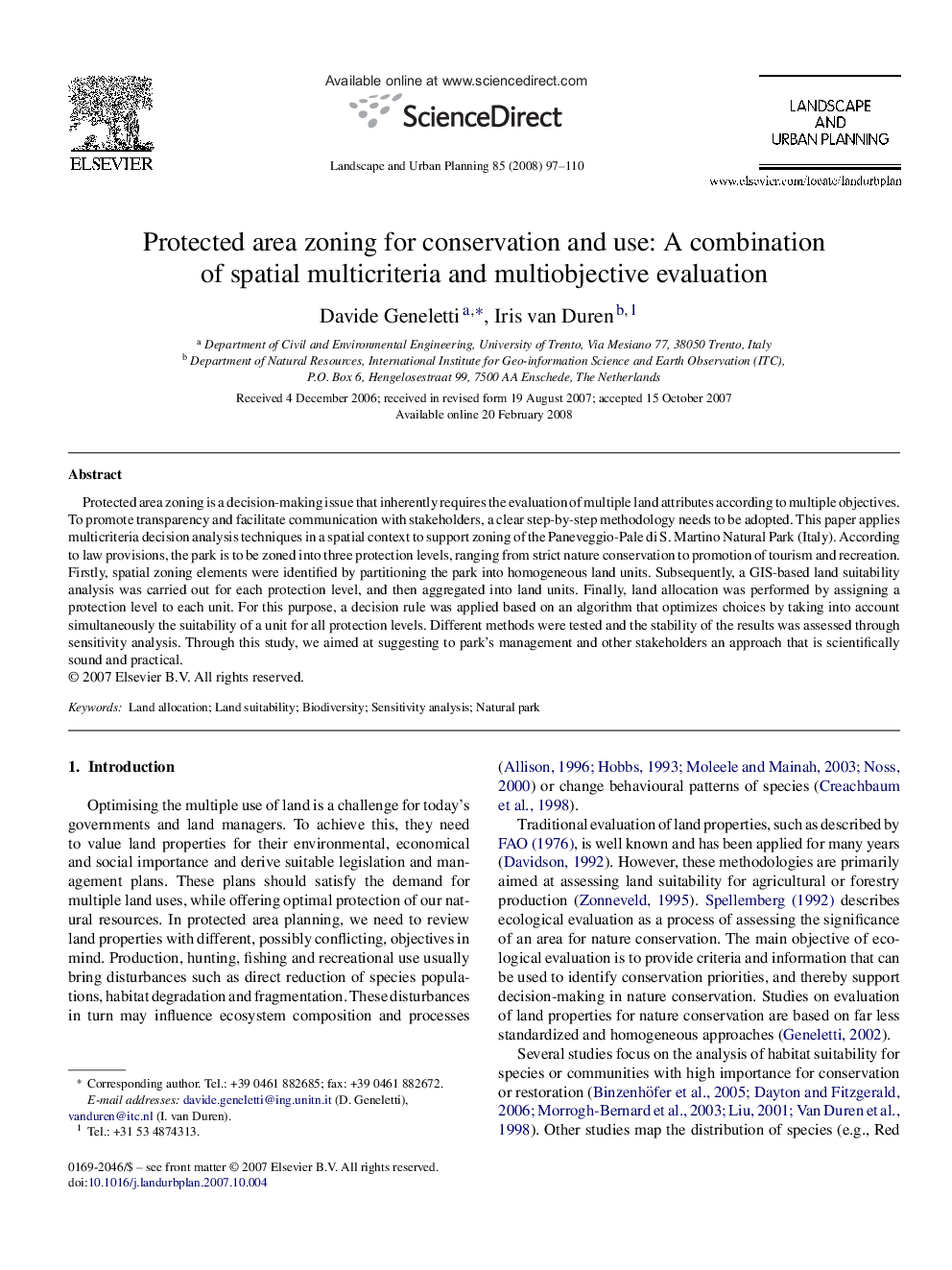| Article ID | Journal | Published Year | Pages | File Type |
|---|---|---|---|---|
| 1050484 | Landscape and Urban Planning | 2008 | 14 Pages |
Protected area zoning is a decision-making issue that inherently requires the evaluation of multiple land attributes according to multiple objectives. To promote transparency and facilitate communication with stakeholders, a clear step-by-step methodology needs to be adopted. This paper applies multicriteria decision analysis techniques in a spatial context to support zoning of the Paneveggio-Pale di S. Martino Natural Park (Italy). According to law provisions, the park is to be zoned into three protection levels, ranging from strict nature conservation to promotion of tourism and recreation. Firstly, spatial zoning elements were identified by partitioning the park into homogeneous land units. Subsequently, a GIS-based land suitability analysis was carried out for each protection level, and then aggregated into land units. Finally, land allocation was performed by assigning a protection level to each unit. For this purpose, a decision rule was applied based on an algorithm that optimizes choices by taking into account simultaneously the suitability of a unit for all protection levels. Different methods were tested and the stability of the results was assessed through sensitivity analysis. Through this study, we aimed at suggesting to park's management and other stakeholders an approach that is scientifically sound and practical.
